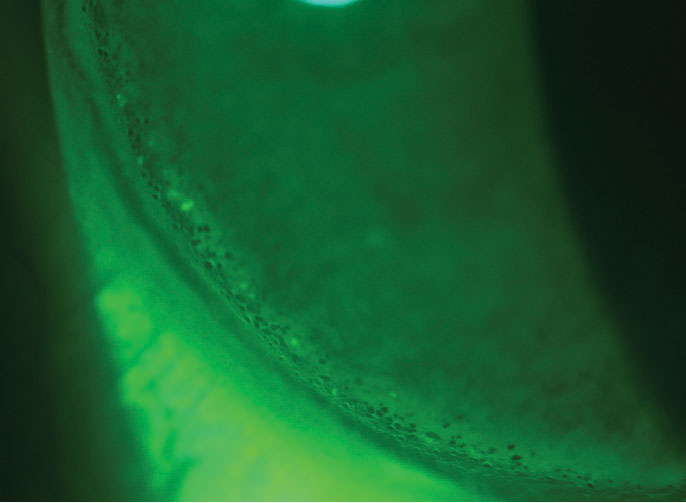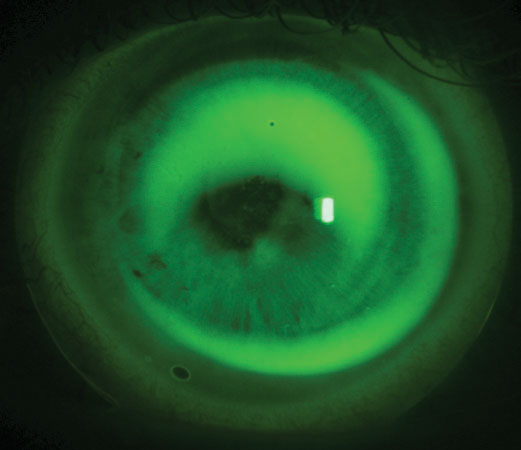 |
Q:
I struggle with the concept of achieving complete cornea clearance in every patient fit with scleral lenses. For years, we’ve accepted some apical touch in keratoconus patients who wear corneal lenses, especially in those with especially steep apical areas. Should we try to completely avoid touch in these patients or is some touch acceptable?
A:
“One of the foundational concepts of scleral lens fitting is complete corneal clearance,” says Jason Jedlicka, OD, associate professor at the Indiana University School of Optometry and chief of the school’s Cornea and Contact Lens Service. He adds that part of what defines a scleral lens is that all the lens bearing occurs on the sclera, hence the name. Dr. Jedlicka notes that some may question whether it is necessary for scleral lenses to fully vault the cornea or if optometrists can fit these lenses with some bearing of the lens on the cornea and still achieve good results. The answer, he says, is it is possible, but not without taking on some risk.
“The idea of a fully vaulting, touch-free corneal lens is appealing to specialty lens practitioners who want to prevent scarring, which leads to vision loss,” Dr. Jedlicka notes. He adds that if a scleral lens were to touch the corneal apex, over time the same risk of chronic staining that leads to irritation and photophobia—and eventually scarring and vision loss—would also be present.
 |
| Fig. 1. Epithelial bullae from a scleral lens land and bear on the peripheral cornea. |
Weighing Your Options
Scleral lenses can touch the cornea anywhere on the surface, increasing the risk of visual and ocular health complications if persistent. According to Dr. Jedlicka, this can happen when a scleral lens is fit too shallow. When this occurs peripherally, he says epithelial bullae formation could occur, likely from mechanical forces on the epithelial tight junctions (Figure 1).1 On the other hand, when this occurs centrally, he notes that the result is similar to what happens during corneal gas permeable lens use—staining and potentially scarring (Figure 2).
Corneal touch can also lead to difficult lens removal, says Dr. Jedlicka. Adhesion forces between a contact lens and an eye increase as the lens surface and the eye surface become increasingly close over a larger surface area, he adds. When fitted with proper vault over the entire cornea and limbal zone, he notes that a scleral lens should not exhibit adhesion—though it may exhibit “suction”—and, therefore, should not be as challenging to remove.
 |
| Fig. 2. This scleral lens was fit with corneal touch. Note the corneal staining on the apex. |
While we see many instances in which scleral lenses end up with corneal contact that does not lead to any complications, Dr. Jedlicka says the risks increase when touch occurs. He recommends making every attempt to avoid corneal touch when fitting scleral lenses to minimize these risks and prevent long-term damage.
| 1. Nixon AD, Barr JT, VanNasdale DA. Corneal epithelial bullae after short-term wear of small diameter scleral lenses. Cont Lens Anterior Eye. 2017;40(2):116-26. |

